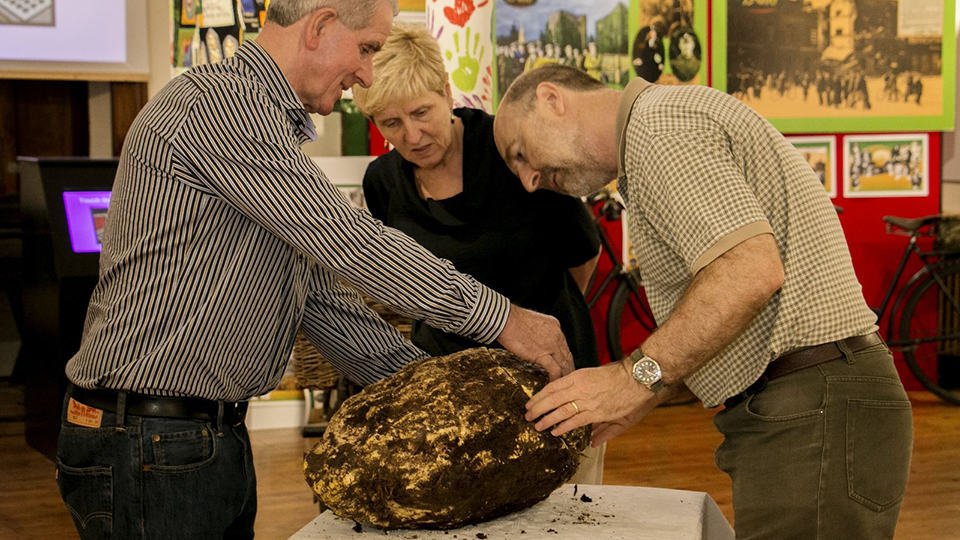
How long has that butter been in your fridge? Several weeks? Maybe a few months? Two thousand years?
That’s how long the “bog butter” that turf cutter Jack Conway found in Emlagh bog in County Meath, Ireland, has been kicking around. Bogs are chilly, high in acid, and low in oxygen, making them very conducive to preservation—so much so that in 1950, a 2400-year-old body was mistaken for a recent murder victim. Butter (to return to the less grisly matter at hand) was often buried in bogs in past millennia to keep it fresh and protect it from thieves, and present-day turf cutters—people who harvest peat to burn for warmth in the winter months (and to smoke the malted barley for your favorite Scotch)—stumble upon chunks of it every so often.
The location of this particular chunk, though, offers another possible explanation for the early Celts’ butter burial. Andy Halpin, an assistant keeper at the Irish National Museum, characterizes the spot in Emlagh bog where this large lump was found as “a no-man’s-land,” sitting at the crossroads of three separate kingdoms, so it’s unlikely that whoever sunk this mass was planning on digging it up. It’s possible, then, that it was buried as an offering to the gods.
Whatever the motivation for preservation, this butter ball is a big one. Weighing in at 22 pounds, it is technically still edible, though it would take some serious guts to give it a try (you’d have to get past the twigs and dirt on the outside, for one thing). According to Cavan County Museum curator Savina Donohoe, the butter smells more or less like butter. “There was even a smell of butter in the room it was in,” she reported. But the more popular consensus is that it smells like a particularly stinky cheese—and crumbles like one. Andy Halpin concedes that it is probably safe to eat, but, he says, “we wouldn’t say it’s advisable.”
Archaeologist Caroline Earwood’s article in the Journal of Irish Archaeology explains that bog butter is sometimes found as a lump—as in the case of Jack Conway’s discovery—but often in wood containers, baskets, or skins. So bog butter isn’t as rare as its strangeness might suggest, but it’s still cool enough to celebrate and display. This lump’s new home is a refrigerated case at the Cavan County museum, rather than the museum entirely dedicated to butter in Cork, which must have already met its quota of butter artifacts for the moment.
Feature Photo Credit: canvasmuseum.ie via Gawker



